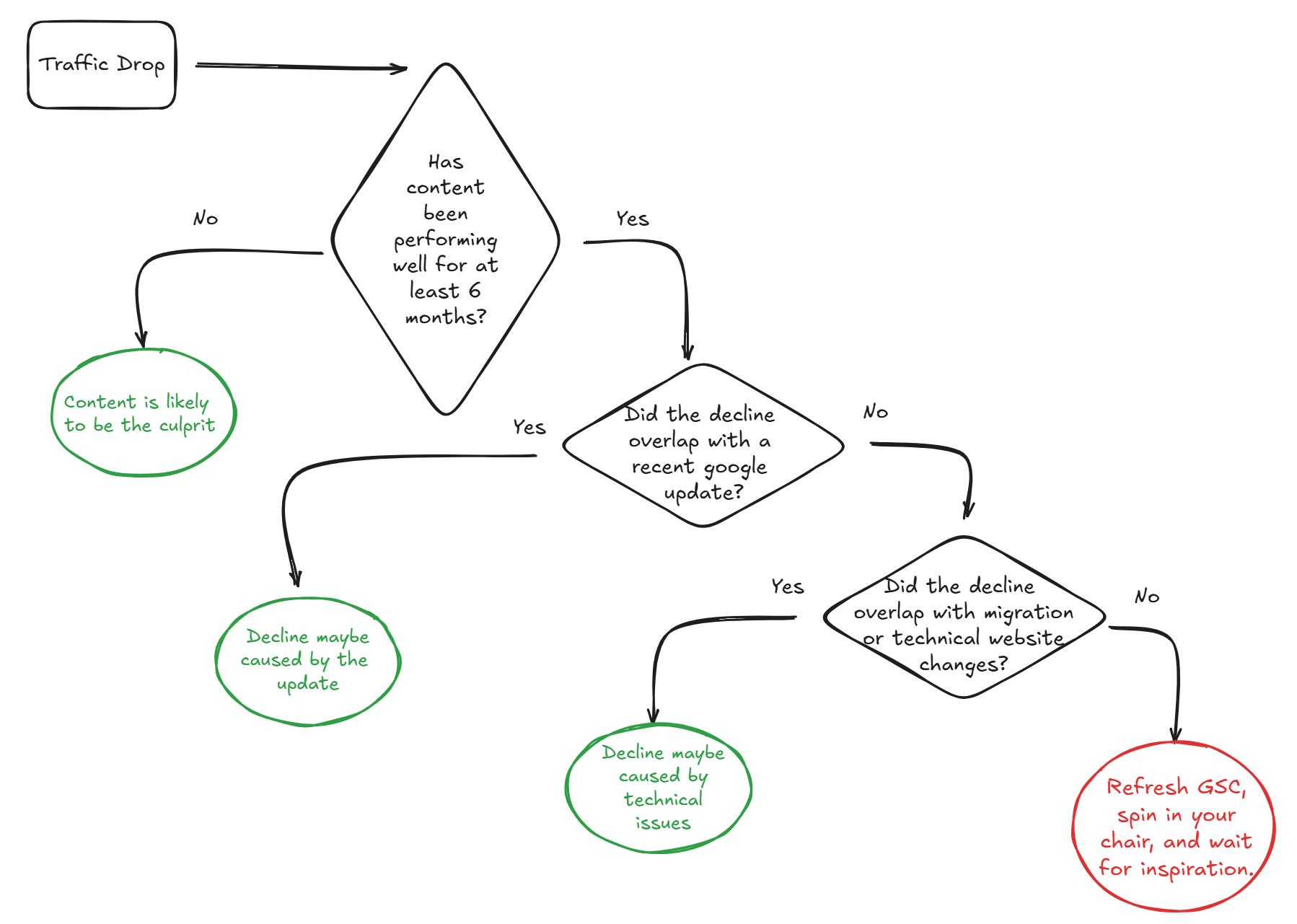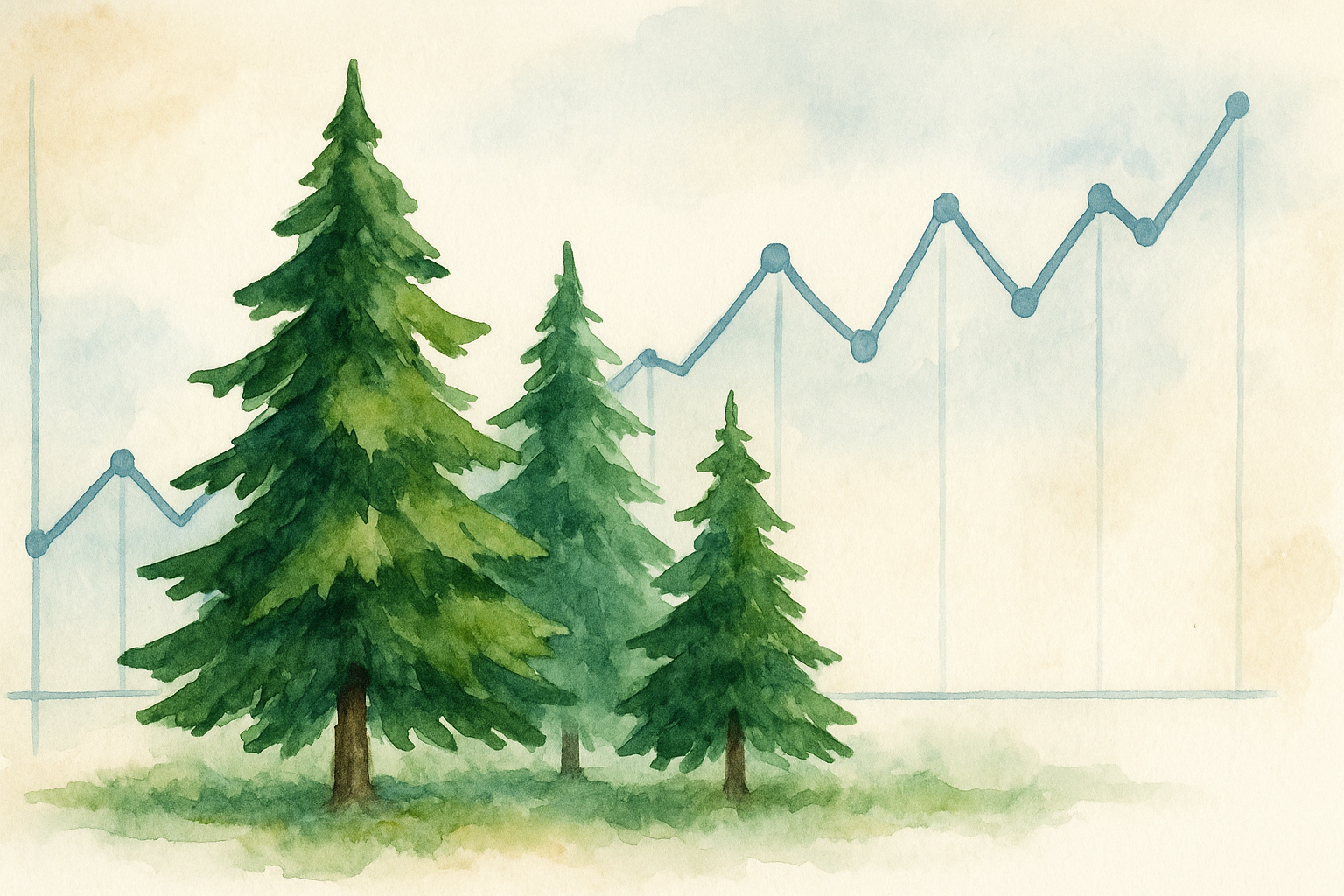Google's Hedge Maze

Being an SEO is not a walk in the park, it’s more like a walk through Google’s hedge maze. Most of the time, we’re trying to figure out what went wrong, and honestly, it’s rarely simple. That’s why SEO is not for the faint-hearted!
Every now and then, a lead will reach out because their traffic suddenly dropped (usually when SEO was an afterthought 😄). I’ve also been hired one time for a full-time role and my first task was putting out a traffic decline fire 🔥 (don’t we all love fixing things we didn’t break? Joking… kinda 😸).
In this blog, I’ll walk through how to diagnose SEO traffic drops, and how sometimes the cause is the last thing you'd expect.
TL;DR
- Traffic is the most important metric to diagnose SEO performance.
- Traffic drops usually come from one (or more) of three areas: content quality, technical SEO issues, or Google updates.
- The process isn't always clear-cut. It often involves a mix of checklists and educated guesswork.
- Core Web Vitals are often dismissed as low-impact, but I've seen many cases where they're the main cause, especially after migrations or technical changes.
The symptom of all symptoms
We're always trying to answer one of two questions:
- Why is traffic declining/decline?
- How can we increase our traffic?
To answer both questions, look at the traffic itself. It’s the “symptom of all symptoms” that shows how your site is doing. It’s been the North Star for SEOs for years.
No matter what Google or others say—like how AI Overview (AIO) traffic might convert better for some businesses—traffic is still the lifeline for publishers. And it’s key for anyone trying to reach users before they make a purchase or conversion decision.
How to analyze SEO traffic decline
If you've noticed a decline in traffic, and we've all seen that at some point, the best approach in my opinion is elimination tests.
Usually, the cause falls into one or more of these buckets:
- Content quality issues (low quality spammy content, or duplication for example)
- Technical SEO issues (missing sitemaps, page speed, etc...)
- The infamous Google updates (not discussing this today)
Your job is to narrow it down, keeping in mind that multiple issues can overlap and make the problem messier.
The process
1# Always look at the obvious first, the quality of your content
Perform a content audit, and ask your clients if they created content using AI (you can create good content using AI, but usually people don't do that 😄). From there you can decide if there is any content duplication or low quality content that needs to be pruned.
From experience pruning deadweight content that does not add any unique value can increase your traffic - don't sleep on that.
What if the content is actually good? Here’s how I usually judge:
- It wasn’t AI-generated.
- It performed well for 6+ months in the past.
If it meets those points, it may not be the root issue. You can still refresh or improve it, but it might not be what's hurting your traffic.
2# Is it a technical issue?
The problem with technical issues is that they're not always obvious or straightforward. This becomes more complex if you're dealing with an enterprise level website with a sophisticated backend, and so many teams making changes to the website at the same time 🤷
To test for technical issues you need a mix of auditing for SEO best practice and guessing. Why do we have to guess, why not just follow the entire SEO audit checklist?
If you do so, you will be continuously asking developers to implement things that may or may not help at all, and you're doing it at random. What you want to do is guess or eliminate unlikely issues by looking further behind the technical SEO checklist, and analyzing data.
For example, I was fixing the migration of FOUR websites. A lot of missing redirects, and no established redirect map. These are two obvious issues that can heavily impact any migration so I recommended these fixed.
But this was not enough.... so I started to audit the changes from the old websites to the new website, starting with the website that had the biggest traffic share. One thing that stood out technically was the big change in the Core Web Vitals score from the old websites to the new ones.
I looked into, came up with a recommended list of fixes to improve core web vitals and alas.... worked like a charm!
Another example is looking at traffic decline and start breaking down traffic by devices or locations to see if there's any segment that stands out or lost the most. I had an incident where I did this and saw that mobile traffic lost more compared to desktop traffic. This screams page speed and core web vitals again.
I saw plenty of SEOs saying CWV didn't bring the value we thought it did and it's a high effort low impact (if any) job. That’s often true if your scores are already decent. However, more often than not, I'm seeing incidents that CWV can be the culprit.
And That’s a Wrap (Almost 😄)
Analyzing traffic drops is like googling through a hedge maze... for real 🙃
To make things a little easier, here’s a simple flowchart to help you narrow down the possible causes (please note there's no one way to do this, in SEO it always depends 😄😄😄):

My biggest advice is learn how to look at data for SEO.
Your approach cannot be "let's just do EVERYTHING RIGHT" because then you may burn out your developers by asking them to implement tons of "best practices" but may not have a direct impact on the issue at hand.
Because alongside having robust up-to-date checklists, looking at the right data can help you narrow down potential causes of traffic drop.
That's that for today folks! And see you next newsletter.
*Disclaimer: Chatgpt fine-tuned the wording after I finished all the writing!
The SEO Riddler Newsletter
Join the newsletter to receive the latest updates in your inbox.



